Spectrum Summary: The NDA Government (2014 Onwards) | History for UPSC CSE PDF Download
Socio-Economic Policies and Programs
- Pradhan Mantri Awas Yojana (PMAY): This scheme aims to provide affordable housing to the urban poor by constructing over one crore houses. It also includes the Pradhan Mantri Awas Yojana (Gramin) for rural housing.
- Pradhan Mantri Jan Dhan Yojana (PMJDY): Launched to ensure access to financial services, this scheme has successfully opened 40.35 crore bank accounts, with 97% of them linked to the Aadhaar database. It has also provided 13.52 crore RuPay debit cards.
- Ayushman Bharat Yojana: This health insurance scheme provides coverage of ₹5 lakh per family annually for secondary and tertiary care hospitalisation. It aims to benefit around 10.74 crore families, covering approximately 50 crore individuals.
- Pradhan Mantri Kisan Samman Nidhi (PM-KISAN): Launched in February 2019 to provide direct income support to farmers, this scheme has benefited over 1.63 crore farmers in Andhra Pradesh, Karnataka, Kerala, Odisha, Punjab, Tamil Nadu, Uttar Pradesh, and West Bengal.
These initiatives reflect the government’s focus on improving housing, financial inclusion, healthcare, and agricultural support for the Indian population.
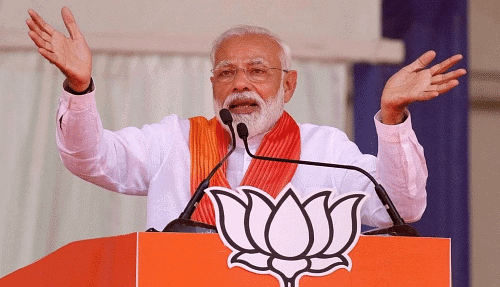
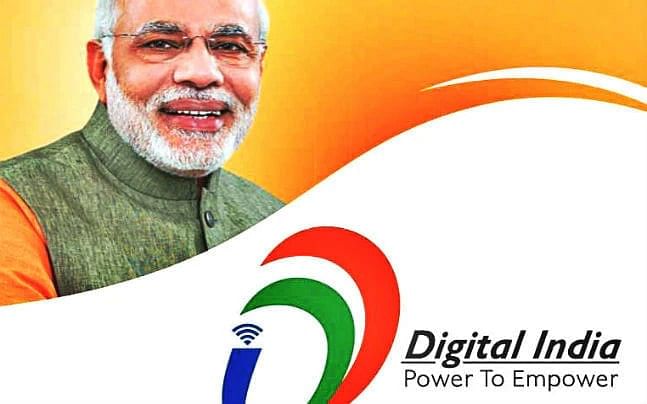

Economic Policies of the NDA Government
The NDA government, under the leadership of Narendra Modi , implemented several significant policies and programs to address economic challenges in India.
Disbanding the Planning Commission and Establishing NITI Aayog
In 2014, the Planning Commission was dismantled and replaced by the NITI Aayog . This change aimed to enhance cooperative federalism and involve state governments more actively in economic decision-making. Unlike its predecessor, NITI Aayog functions as a policy think tank rather than a fund distributor. The Prime Minister chairs NITI Aayog, which includes a governing council of chief ministers and lieutenant governors.
The JAM Trinity: Jan Dhan, Aadhaar, and Mobile
The NDA government introduced the JAM Trinity , which integrates Jan Dhan Yojana , Aadhaar , and mobile numbers to streamline subsidy transfers and enhance service delivery to citizens.
- Pradhan Mantri Jan Dhan Yojana (PMJDY) : Launched on August 24, 2014, PMJDY aimed at financial inclusion by allowing individuals without bank accounts to open one without a minimum balance requirement. This initiative significantly increased the number of bank accounts and deposits, bringing unbanked individuals into the formal banking system.
- Aadhaar Initiative : The strengthening of Aadhaar , which began in 2009, involved the collection of biometric and demographic data by the Unique Identification Authority of India (UIDAI) . Each resident is assigned a unique 12-digit identity number, making Aadhaar a crucial tool for improving service delivery.
- Aadhaar Act of 2016 : This legislation empowered the government to use Aadhaar for targeted delivery of financial benefits and services. Aadhaar became essential for identifying recipients of subsidies, such as LPG subsidies , by linking gas connections and bank accounts to Aadhaar.
- Supreme Court Ruling : The Supreme Court restricted Aadhaar's use to welfare schemes. Despite this limitation, Aadhaar's implementation significantly reduced waste and corruption in benefit transfers. The JAM Trinity aimed to address issues of leakages and inefficiencies in various subsidy schemes intended to support the minimum standard of living for the poor.
- Minimizing Leakages : The JAM Trinity aimed to minimize leakages by eliminating intermediaries in the subsidy delivery process. Aadhaar ensured accurate identification, Jan Dhan bank accounts facilitated direct fund transfers, and mobile phones enabled quick, secure, and convenient transactions through mobile payment technology.
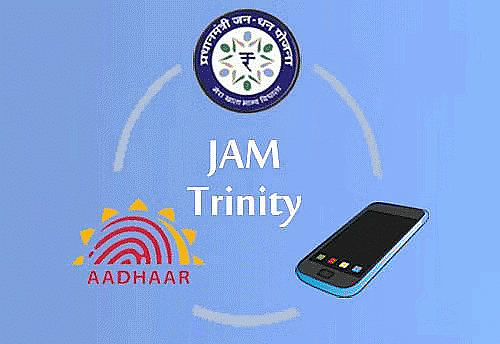
Key Government Initiatives and Policies
- National Health Policy : In 2015, the government introduced a new National Health Policy without increasing spending. This policy emphasized the role of private healthcare organizations and combined various national health programs with the National Health Mission. In 2018, the Ayushman Bharat programme, a health insurance scheme, was launched.
- Swachh Bharat Mission : Launched on October 2, 2014, this campaign aimed to improve sanitation and public health by cleaning streets, roads, and infrastructure, ending manual scavenging, and promoting toilet construction. The World Health Organization recognized the mission for preventing thousands of diarrhoea-related deaths in rural India by 2018.
- Legal Reforms : Several legal reforms were implemented to enhance commercial dispute resolution and promote efficient loan recovery and entrepreneurship. The Arbitration and Conciliation Act was amended in 1996, the Insolvency and Bankruptcy Code was introduced in 2016, and the Benami Transactions (Prohibition) Amendment Act was enacted in 2016 to curb the use of unaccounted money in property transactions.
- Demonetisation : On November 8, 2016, the government demonetized Rs 500 and Rs 1,000 currency notes to combat corruption, fake currency, and terror financing. Despite initial disruptions and hardships, demonetisation expanded the tax base, increased digital payments, and improved adaptability to change.
- Goods and Services Tax (GST) : Launched in 2016, the GST was a significant reform that altered Centre-state financial relations. The NDA government collaborated with states to implement the GST, which replaced various central and state taxes, transforming the taxation system for goods and services. Some items, like petroleum products and alcohol for human consumption, were excluded from its scope.
- Banking and Hydrocarbon Policies : The government took steps to address the underperforming assets of public sector banks. The Hydrocarbon Exploration and Licensing Policy (HELP) was introduced in 2016 to enhance domestic oil and gas production, attract investment, create jobs, and ensure transparency in the sector.
Farmers
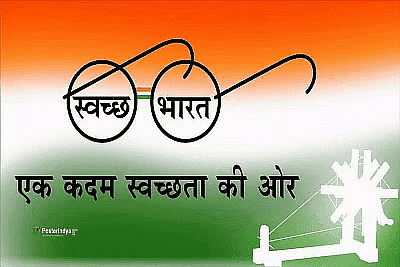
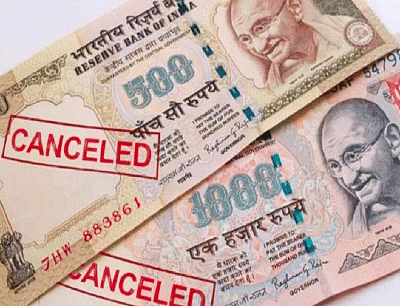
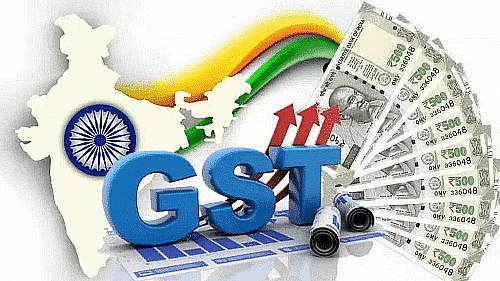
Welfar Schemes
- The government has expanded and introduced various welfare schemes to provide support to the citizens.
- Pradhan Mantri Awas Yojana (PMAY) : This scheme aims to provide affordable housing to the urban poor by constructing houses with basic amenities. The scheme was launched in June 2015 and has been successful in providing homes to many beneficiaries.
- Pradhan Mantri Ujjwala Yojana (PMUY) : Launched in May 2016, this scheme aims to provide free LPG connections to women from Below Poverty Line (BPL) households. The initiative has been successful in promoting clean cooking fuel and reducing indoor air pollution.
- Pradhan Mantri Kisan Samman Nidhi (PM-KISAN) : This scheme provides direct financial assistance to small and marginal farmers to support their income and ensure food security. The scheme has been instrumental in providing financial relief to farmers.
- Ayushman Bharat Pradhan Mantri Jan Arogya Yojana (AB-PMJAY) : Launched in September 2018, this scheme aims to provide health insurance coverage to economically vulnerable families. The initiative has been successful in improving access to healthcare services and reducing out-of-pocket expenditures for families.
- Atal Pension Yojana (APY) : Launched in May 2015, this scheme aims to provide a fixed pension to workers in the unorganised sector after they reach the age of 60. The scheme has been successful in promoting social security and financial inclusion.
- National Pension Scheme (NPS) for Farmers : This scheme aims to provide a pension to farmers after they reach the age of 60. The initiative has been successful in promoting social security and financial inclusion among farmers.

Government Welfare Schemes and Security Measures
The NDA government, under Prime Minister Modi, effectively carried out various public welfare schemes, enhancing previous initiatives and their efficiency. Here are some key points in simple language:
- Pradhan Mantri Awas Yojana: This programme facilitated the construction of numerous rural houses, providing shelter to those in need.
- Rural Electrification: The government focused on ensuring electricity access to every village. However, it's essential to verify the claim of complete electrification by 2018 with current statistics.
- Ujjwala Yojana: Aimed at providing LPG connections to households below the poverty line, this initiative sought to replace traditional cooking fuels with cleaner liquefied petroleum gas.
- Beti Bachao Beti Padhao: Launched in 2015, this scheme targeted the reduction of female infanticide by promoting the education and welfare of girl children.
- Sukanya Samriddhi Yojana: Also introduced in 2015, this scheme focused on supporting and implementing welfare programmes for the well-being of girl children.
- MGNREGS: Initially facing criticism, the Modi government improved this scheme by emphasising productive work, introducing geo-tagging for transparent monitoring, and preventing leaks.
- Pension Schemes: Various pension schemes from previous governments were continued with modifications, and new ones were introduced under the current government.
Security Measures
Dealing with Maoist Insurgency: In the Bastar region of Chhattisgarh, the government faced ongoing challenges from Maoist violence. To address this, a comprehensive strategy was implemented.
- Infrastructure Development: The government focused on improving the road network in the Bastar region. Enhanced connectivity was seen as vital for facilitating the movement of security forces and promoting overall development in the area.
- Strengthening Security Forces: Recognising the need for a well-equipped and trained security force to combat insurgency, the government invested in bolstering the resources and capabilities of security personnel operating in Maoist-affected areas.
- National Policy and Action Plan (2015): A significant milestone was the launch of this comprehensive framework aimed at addressing both security and developmental aspects in areas affected by Naxalite/Maoist insurgency. The plan sought to tackle immediate security concerns while fostering long-term development to help these regions overcome the challenges posed by insurgency.
By focusing on infrastructure, strengthening security forces, and implementing a strategic policy framework, the government aimed to mitigate the impact of Maoist violence and promote stability and development in the affected regions.
Situation in Kashmir and Involvement of Pakistan
The Modi government faced the challenge of managing a significant number of militants in Kashmir.
- Pakistan's Role: Pakistan was actively supporting and training militants to infiltrate Kashmir.
- Government Response: The Indian government took measures to address this issue, including the deployment of more soldiers in Kashmir to combat the rising number of militants.
Surgical Strikes: In 2016, the Indian Army conducted surgical strikes across the Line of Control (LoC) in response to a terrorist attack on an army base in Uri, Kashmir.
- Objectives of the Surgical Strikes: The surgical strikes aimed to achieve the following:
- Send a Strong Message: The strikes were intended to convey to Pakistan that India would not tolerate any further terrorist activities emanating from its territory.
- Deter Future Attacks: By taking decisive action, India aimed to deter Pakistan from continuing its support for anti-India terrorism.
International Support: Following the surgical strikes, India sought international support to isolate Pakistan on the global stage.
- Pakistan's Response: In response to the international diplomatic pressure and the rising costs of supporting militancy, Pakistan began to distance itself from the militants it had previously supported.
- Shift in Pakistan's Strategy: Pakistan, facing increased costs and international scrutiny, started to change its strategy regarding militants.
- Emphasis on a Peaceful Kashmir: Pakistan began to focus on presenting a narrative of a peaceful Kashmir, aiming to improve its international image and reduce the costs associated with supporting militancy in the region.
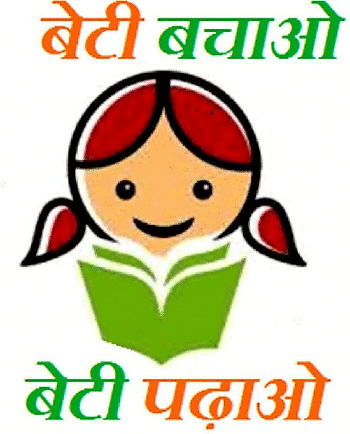
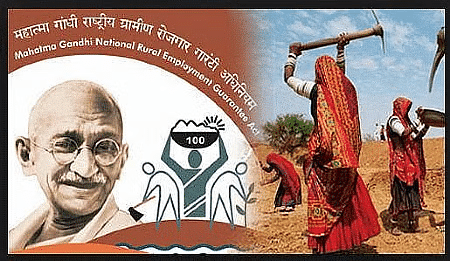
Security Situation in Kashmir
The security situation in Kashmir is complex due to a combination of factors, including Pakistan's support for terrorism and ongoing political issues within the region. Here's a detailed overview:
Political Developments (2014-2016)
- November-December 2014: Elections were held in Jammu and Kashmir, leading to the People's Democratic Party (PDP) becoming the largest party. However, the PDP could not form a government on its own.
- March 2015: The Bharatiya Janata Party (BJP) formed a coalition government with the PDP, resulting in a coalition government with Mufti Mohammed Sayeed as the Chief Minister.
Turbulence and Protests (2016)
- July 2016: Protests erupted in Kashmir following the killing of a member of the Hizbul Mujahideen militant group.
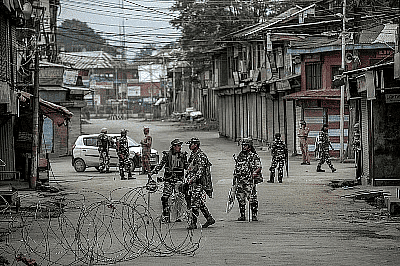
Foreign Relations
Under the NDA government led by Prime Minister Narendra Modi, India's foreign policy has undergone subtle changes. Foreign Secretary Vijay Gokhale noted that India now aligns itself based on specific issues, moving away from the previous non-aligned approach.
In 2014, Sushma Swaraj made history as the first woman to independently manage the Ministry of External Affairs, showcasing a significant shift in leadership within the ministry.
Key Aspects of Modi's Foreign Policy
- Modi's foreign policy places a strong emphasis on enhancing relations with neighbouring countries, a strategy known as 'neighbourhood diplomacy' .
- This approach has successfully improved ties with countries such as Bangladesh , Nepal , and Sri Lanka .
- A notable achievement was the ratification of a significant land exchange agreement with Bangladesh by the Indian parliament in 2015, building on initiatives from the previous UPA government.
- Relations with Pakistan have faced challenges, impacting overall diplomatic dynamics.
- In 2017, tensions escalated between India and China over the Doklam region, located at the junction of India, Bhutan, and China.
- The standoff was triggered by Chinese forces attempting road construction in the area, raising concerns for India, particularly regarding the China-Pakistan Economic Corridor (CPEC) and China's Belt and Road Initiative (BRI).
- Under Modi's leadership, relations with the United States , already improving under previous administrations, were further strengthened.
- Key agreements such as the Logistics Exchange Memorandum of Agreement (LEMOA) in 2016 and the Communications Compatibility and Security Agreement (COMCASA) in 2018 enhanced military cooperation between the two nations.
- Despite changes in US trade policies under President Donald Trump, Indo-US relations remained stable, with India joining the quadrilateral alliance alongside the US, Japan, and Australia.
- The 'Look East Policy' evolved into the 'Act East Policy' , reflecting a focus on expanding Indian influence in East and Southeast Asia .
- In West Asia , India has maintained a balanced diplomatic stance towards both Palestine and Israel , while fostering relationships with countries like Saudi Arabia and the United Arab Emirates .
- India's participation in international groups such as the Australia Group underscores its commitment to global security by preventing the proliferation of dual-use goods and technology.
- Membership in various nuclear export control regimes, including the Missile Technology Control Regime (MTCR) and the Wassenaar Arrangement (WA), highlights India's role in non-proliferation efforts.
- The establishment of the International Solar Alliance with France reflects India's leadership in global initiatives to combat climate change and global warming.
- The Modi government has redefined 'strategic autonomy' by prioritizing strengthened partnerships over avoiding them, marking a significant shift in India's foreign policy approach.
General Elections of 2019 Simplified
During the Modi government, there were few major communal riots, but there was a feeling that some right-wing Hindu nationalist groups became more influential. They started initiatives like “Ghar Wapasi” for Hindu religious reconversion, campaigned against “love jihad,” and sometimes praised Nathuram Godse. These actions harmed social harmony. Campaigns against “love jihad” were viewed as limiting personal freedom.
There were incidents of violent attacks on individual Muslims, mainly for suspected cow slaughter, but also for other reasons. Non-Muslims were targeted based on suspicions of wrongdoing. Some fringe right-wing groups felt they had silent support from the government. Although reports indicate a rise in lynching incidents, thorough historical research is needed for clear conclusions.
Impact of the Internet and Legal Reforms
- The increased use of the internet coincided with the BJP’s rise to power, with each affecting the other significantly.
- Lynchings were often recorded and streamed on social media, especially WhatsApp, leading to swift mobilization and the spread of “fake news.”
- The Supreme Court intervened, urging the government to act firmly against lynching and hold officials responsible.
- Despite stricter laws and awareness campaigns, violence against women continued; however, the government introduced the death penalty for the rape of minors under 12.
- Important legislations on juvenile justice, child and adolescent labour, and mental health were passed.
- A landmark decision by the Supreme Court decriminalised homosexuality by overturning Article 377. This was a positive step for the LGBTQ community's fight for social acceptance.
- The Supreme Court's ruling allowing women of all ages to enter the Sabarimala Temple received mixed feedback, promoting equality but challenging traditional practices.
- The court also ruled against the practice of triple talaq among Muslims, a decision welcomed by women but opposed by conservative groups.
- In terms of job creation, progress was limited, with many in the workforce remaining unskilled and impoverished.
- Attempts to revitalise the manufacturing sector and create jobs through initiatives like “Make in India” faced obstacles due to low skills, low-paying jobs, inadequate infrastructure, and outdated labour laws.
General Elections in India, 2019
In April and May 2019, India held elections to select representatives for the 17th Lok Sabha.
- The National Democratic Alliance (NDA) won a decisive victory, securing 353 seats .
- Within this alliance, the Bharatiya Janata Party (BJP) played a crucial role, winning 303 seats and achieving a clear majority on its own.
- The BJP made significant progress in West Bengal and other states where the Indian National Congress had recently been successful in local elections, reflecting voters' awareness of their choices at both state and national levels.
- The Congress party improved its performance from the 2014 elections, securing 52 seats .
- Allied parties supporting Congress, known as United Progressive Alliance (UPA) allies , won 33 seats .
A notable aspect of the 2019 elections was the record number of female candidates and the highest number of women elected to seats compared to previous elections.
NDA Forms Government Again
In May 2019, the NDA formed the government once more, marking a historic moment as the first non-Congress government to complete a full term and secure a second consecutive term with a majority in the Lok Sabha.
Narendra Modi , the leader of the BJP, was reappointed as prime minister, following in the footsteps of Congress leaders Jawaharlal Nehru and Indira Gandhi .
On May 30, 2019, during the swearing-in ceremony, Modi took the oath of office as prime minister. Although the BJP had sufficient seats to govern independently, it opted to include its allies in the council of ministers.
In his address to the new Members of Parliament (MPs), Modi emphasized the importance of working within the government to ensure fair treatment for all citizens and to rebuild trust with minority communities. He acknowledged the long-standing fear experienced by minorities and stressed the need to change this narrative, aiming to earn the trust of Muslims with the slogans " Sabka Vishwas " (Trust of All) along with " Sabka Saath, Sabka Vikas " (Together with All, Development for All). This approach demonstrated Modi's confidence in leading his party and government while not being strictly constrained by the ideological boundaries of the Sangh Parivar .

Reasons for NDA's Victory
- The NDA won again because of the hard work of BJP members following Amit Shah's plan. Even with some differences, the BJP managed to unite its allies.
- Narendra Modi showed clear leadership for the BJP, while opposition parties had a hard time coming together or finding a strong leader to challenge him.
- The campaign methods were aggressive and sometimes crossed into disrespectful language. The Congress' slogan, ' Chowkidar chor hai ' (the watchman is a thief), did not resonate well with the public, appearing disrespectful towards the prime minister and harming Congress' image.
- The successful implementation of welfare schemes by the Modi government was crucial for securing a second term for the NDA.
- Many felt that other parties were targeting minority votes insincerely, which some called 'appeasement' towards minority groups. The BJP gained support not only through its Hindutva ideology but also by bridging caste divides.
The decisive military actions against Pakistan, including the airstrike in Balakot in February 2019, significantly increased public backing for the NDA. The opposition's doubts regarding these actions appeared as questioning the army's competence, which worked against them.
Major Developments during NDA's Second Term
- Triple Talaq Criminalized : In July 2019, a law was enacted making instant triple talaq a crime. This practice had already been ruled unconstitutional by the Supreme Court in 2017.
- Rights for Transgender People : A law to safeguard the rights of transgender individuals was introduced in January 2020.
- Changes in Child Protection Laws : Amendments to the Protection of Children from Sexual Offences (POCSO) Act were made in 2019, focusing on harsher penalties and measures against child pornography.
- Road Safety Laws : The Motor Vehicles (Amendment) Act was passed in September 2019 to improve road safety.
- Amendment to UAPA : In July 2019, modifications were made to the Unlawful Activities Prevention Act, allowing the government to designate an individual as a terrorist without a trial.
- Article 370 Revoked : In August 2019, Article 370, which granted special status to Jammu and Kashmir, was abrogated. The state was divided into two Union Territories.
- Citizenship (Amendment) Act : This law, passed in 2019, faced opposition due to its approach to fast-tracking citizenship for some persecuted minorities while excluding specific Muslim sects.
- Farm Reforms : In 2020, three farm laws were introduced, but farmer protests led to a Supreme Court intervention and the eventual withdrawal of these laws.
- Bodo Accord : In January 2020, a peace and development agreement was signed with Bodo groups.
- Bank Mergers : In August 2019, ten public sector banks were merged into four, aiming to create stronger financial institutions.
- Ayodhya Verdict : In November 2019, the Supreme Court delivered a unanimous verdict on the Ayodhya land dispute, permitting the construction of a Ram temple and allocating land for a mosque.
- India-China Standoff : A significant standoff occurred between India and China, primarily in Ladakh, due to Chinese encroachment into Indian territory.
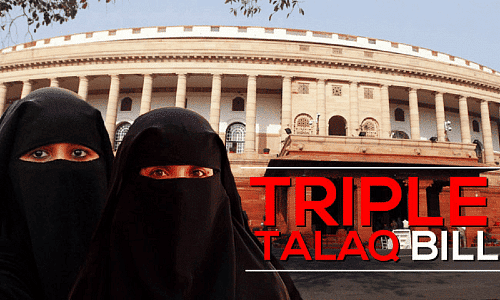
India’s Struggle and Response to the COVID-19 Pandemic
The Challenge of COVID-19
- In 2019-2020, the NDA government faced a significant challenge with the outbreak of the COVID-19 pandemic caused by the SARS-CoV-2 virus.
- For the first time, a nationwide lockdown was imposed, stopping non-essential activities and restricting transport between states.
Weaknesses in Healthcare System
- The pandemic revealed serious weaknesses in India’s healthcare system, including a shortage of hospital beds, ambulances, and medical personnel.
- There was also a lack of necessary medication to treat the infection.
- Vaccines became crucial for fighting the pandemic, along with other public health measures.
Economic Consequences
- The lockdown, while necessary to control the virus, had a devastating impact on the economy.
- Many small businesses shut down, people lost their jobs, and migrant workers faced severe hardships.
Disruption of Education
- Schools and educational institutions were closed, leading to a shift to digital learning.
- This transition highlighted the disparity between the privileged and underprivileged in accessing online education resources.
Strain on Federal Structure
- The pandemic stressed the federal system, with states criticizing the central government’s handling of the crisis.
- Cooperative federalism was undermined as blame-shifting became common.
Vaccination Efforts
- The government initiated the production of vaccines, including the Oxford-AstraZeneca COVID-19 vaccine (Covishield) and the indigenous Covaxin.
- A massive nationwide vaccination campaign was launched.
Impact of the Delta Variant
- In 2020-21, the emergence of the Delta variant worsened the situation, leading to increased deaths and a severe shortage of oxygen cylinders.
Public Response
- Amid the challenges, some citizens exhibited kindness by helping others, while others took advantage of the situation through hoarding and scams.
Aatmanirbhar Bharat Abhiyaan
- In May 2020, Prime Minister Narendra Modi launched the Aatmanirbhar Bharat Abhiyaan to foster self-reliance and support those hardest hit by the pandemic.
- This initiative focused on various aspects, including the economy, infrastructure, systems, vibrant demography, and demand.
One Nation, One Ration Card Scheme
- This scheme was introduced to enable migrant workers and others to access food grains from any fair price shop across states.
- It utilized electronic point of sale (e-PoS) devices to facilitate inter-state ration access.
Celebrating 75 Years of Independence (2021-22)
- The year 2021-22 marked the 75th anniversary of India’s independence, reflecting on the nation’s journey and resilience.
India's 75th Independence Day Celebration
India celebrated its 75th Independence Day on August 15, 2022, marking the beginning of the Azadi ka Amrit Mahotsav. The celebrations commenced on March 12, 2021, with a 75-week countdown leading up to this date and continued until August 15, 2023.
New President and Her Significance
- In 2022, India welcomed its 15th president, Droupadi Murmu, who took the oath on July 25.
- She is the second woman and the first tribal person to hold the office of President.
- Murmu is also the first president born in independent India, coming from Mayurbhanj in Odisha and belonging to the Santhal community.
- Her journey illustrates how individuals can overcome poverty in less developed areas to achieve success in teaching and politics.
Achievements and Challenges Post-Independence
- Despite facing various challenges, India has made significant progress in the seven decades since independence.
- A vibrant political democracy is evident, as shown by the 2022 state assembly elections in Punjab, where the Aam Aadmi Party gained a notable majority.
- The Supreme Court raised questions about the necessity of a sedition law, a holdover from colonial times, questioning its relevance long after independence.
- Concerns have been raised about the misuse of this law against political opponents, despite its low conviction rates.
- There are also worries about the use of institutions for political purposes, which has led to their decline.
- There is still much work to be done, especially in areas like human rights, social equality, and access to healthcare and education for all.
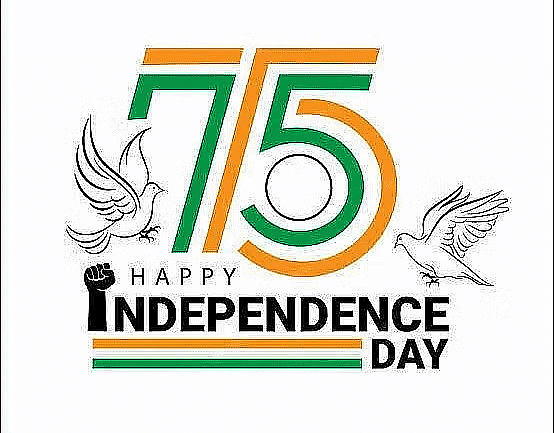
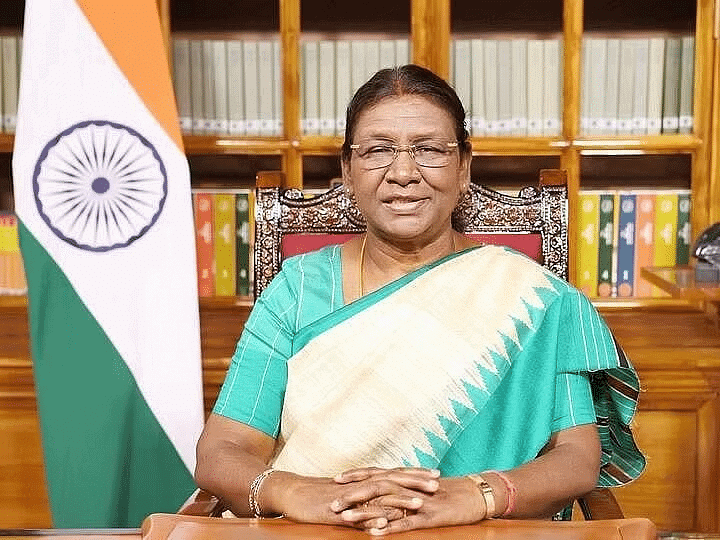
|
216 videos|855 docs|219 tests
|
FAQs on Spectrum Summary: The NDA Government (2014 Onwards) - History for UPSC CSE
| 1. What is the NDA Government and when did it come into power? |  |
| 2. What is the significance of the General Elections of 2019 in India? |  |
| 3. How long has the NDA Government been in power? |  |
| 4. What are some key achievements of the NDA Government since 2014? |  |
| 5. How is the NDA Government different from other political alliances in India? |  |
















